A project of BCJN’s Green Vision Working Group
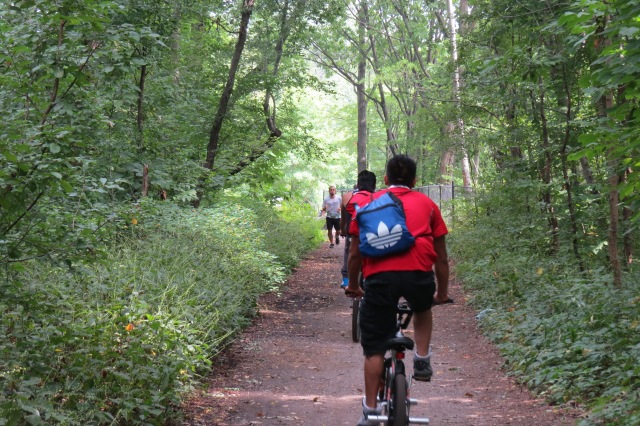
Runners, bicyclists, birders, nature lovers, families, and young children enjoy the Putnam Trail’s dirt surface.
BACKGROUND
In February 2016, after following the issue for a year, BCJN adopted an official consensus position in opposition to a New York City Parks Department proposal to turn Van Cortlandt Park’s Putnam Trail into an asphalt-paved and widened “Putnam Greenway,” in essence a bicycle transportation corridor alongside a state-designated Class YO-1 wetland (the state’s highest protection classification).
There are excellent alternatives to asphalt paving of the trail that would be more environmentally friendly, site-suitable, and conducive to bicycling, as well as ADA-compliant (Americans with Disabilities Act).
In the winter of 2016, N. Bronx Community Boards 8 and 7, taking little time to consider alternatives to asphalt paving, approved the Parks plan despite considerable community opposition. This opposition included 2,550 signatures on an anti-asphalt paving petition circulated by BCJN ally Save the Putnam Trail as well as a great deal of testimony, including by BCJN, against the plan. The plan then went to the NYC Public Design Commission (PDC) in March 2016; BCJN testified in opposition at the PDC hearing. It will eventually be presented to the NYS Department of Environmental Conservation (DEC).
After adopting its position in opposition to the Parks plan in early winter 2016, BCJN partnered with Save the Putnam Trail to write an open letter to Bronx New York City Council members, Bronx Community Boards, the Public Design Commission, and the DEC, calling for an alternative to the Parks plan. The letter, which can be found below, has been signed by a number of Bronx and NYC organizations. Additional organizations are encouraged to sign. If you represent an organization that is interested in doing so, please email to: bronxclimatejusticenorth@gmail.com
For BCJN, the campaign to prevent asphalt paving of Van Cortlandt Park’s Putnam Trail is about far more than a local effort to preserve the rustic nature of a section of an important park (VCP is the third largest park in New York City), as important as we feel that is. It is also about issues of local governance, the responsiveness of city and state agencies to the public interest, protection of New York City’s fast-dwindling wetlands, wildlife, and biodiversity, access to nature for inner city populations unable to escape the “asphalt jungle,” and climate mitigation.
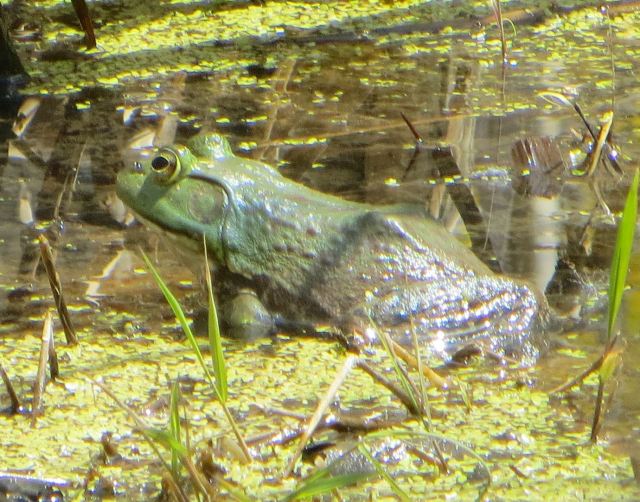
An American bullfrog, photographed in the wetland along the Putnam Trail. Photo: Debbi Dolan
*******
March 20, 2016
An Open Letter in Opposition to the New York City Department of Parks and Recreation revised design proposal to create a “Putnam Trail Greenway” in Van Cortlandt Park
To: Bronx NYC Council Members, Bronx Community Boards, the New York City Public Design Commission, and the New York State Department of Environmental Conservation (DEC)
From: Bronx Climate Justice North, Community Association of Marble Hill, New York Walkers Club, NYC Wildflower Week, Save the Putnam Trail, Shorewalkers, Inc., Sierra Club NYC Group, United Confederation of Taino People
We write to inform you that we, the signatories of this letter, are united in our belief that the current NYC Parks Department proposal to create a “Putnam Trail Greenway” in Van Cortlandt Park will serve neither the interests of people nor of nature. We base our position on the understanding that a design that does not serve nature cannot serve people. We ask that you reject this proposal and request a more environmentally sensitive design, without the destruction of understory and hundreds of trees, with a site-suitable surface like stone dust that is ADA-compliant and conducive to bicycle riding. We ask for a plan that is consistent with the emphasis on city-wide sustainability contained in Mayor deBlasio’s PlaNYC. And we ask for borough equity – why should trails in the Bronx be paved with asphalt when similar trails in other parts of the city have more environmentally appropriate surfaces?
The Putnam Trail’s rustic character would be permanently altered by the Parks Department’s plan: it would become little more than a transportation corridor. In proposing the “Putnam Trail Greenway,” the Parks Department seems to be saying that parks should be used primarily for transportation, rather than for recreation. Clearly this redesign does not serve all users, particularly children and young families, and those people in our borough who are unable, due to economic constraints, to leave the city to spend quiet time in nature. More than 2,500 people have signed a petition in opposition to asphalt paving for the Putnam Trail, and a great many have spoken at Community Board meetings to make their wishes known.
We fervently hope that we are entering the age of the bicycle, non-polluting public transit, the electric car. This momentous shift can and must be achieved, however, while preserving precious and fragile natural spaces. What makes the Putnam Trail different from the other miles of unpaved trail in Van Cortlandt Park is its proximity to a YO-1 classed wetland. The trail is unique in providing precious access to the wetland. That same proximity, however, gives us, as decision-makers and stewards of our parks, an added burden of responsibility for preserving a fragmented ecosystem found nowhere else in the Bronx, and only rarely in all of New York City.
The debate over the future of the Putnam Trail is, in microcosm, a debate about our species’ relationship to nature as we move into the post-fossil fuel age. Will we be wise enough to value healthy soil, clean water, pollination, biodiversity, carbon sequestration – all of the many services that healthy ecosystems provide free of charge? Can we be as generous to nature (and hence to ourselves), as nature is to us? Or, in the mistaken name of “green infrastructure,” will we widen and pave a wetland trail with a toxic surface, when other transportation corridors already exist and can be improved as rapid bicycle links?
This is an opportunity to create a new model, a new approach for how we make changes in our urban environments. Those changes can strengthen human resilience and our ability to face the challenges of the future in an era of climate change, or send us back to the same harmful practices of the past.
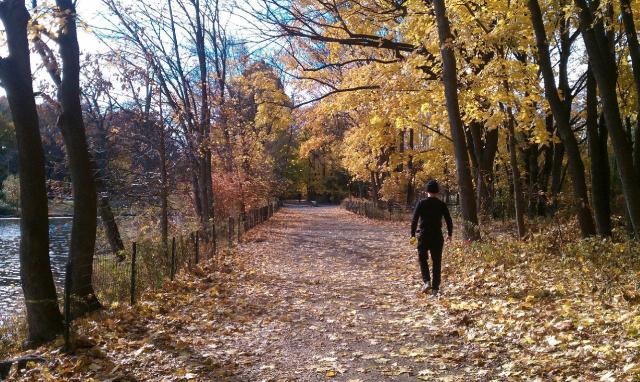
Strolling Van Cortlandt Park’s Putnam Trail on an autumn day.
Our borough’s many community stakeholders: Many residents of the Bronx live in environmental justice communities. In 2016, environmental, public health, economic, and racial justice organizations of long standing, including the signatories to this letter, are coming together in new ways to chart a path for our borough that is cleaner, greener, and healthier for its citizens. Residents of the Bronx are vulnerable to and suffering from multiple, disproportionate environmental health burdens and obstacles to effective participation in decisions with environmental, health, and quality of life consequences.
The South Bronx is the poorest congressional district in the country. Thirty-eight percent of its residents, some one-quarter of a million people, live below the poverty line. Air quality due to oversaturation of industry and diesel-powered trucking and freight trains is so poor that a wide swathe of the community has long been known as “Asthma Alley.” Parts of our borough are food deserts. Real estate development and gentrification that disproportionately affect the lives and livelihoods of low-income residents are no longer just a looming threat. Access to green spaces and waterfront in many portions of the Bronx is exceptionally poor. The South Bronx is considered an industrial “sacrifice zone.” And, like many other parts of the city, the Bronx is vulnerable to extreme weather and the damaging effects of climate change, which are mitigated by natural areas like Van Cortlandt Park.
Who has considered the impact of the Parks plan on the water quality of Van Cortlandt lake, a place of deep relaxation and recreation for many local fishermen?
These realities make a proposal to pave 1.5 acres of one of the city’s wildest parks an insult to communities that need more green spaces and less asphalt, where children, youth, and people of all ages can experience and learn about nature first-hand, without competing for space and safety with speeding bicyclists on their way elsewhere.
The Parks Department plan endangers an unnamed stakeholder: Wild species are stakeholders too, ones with whom our own species’ fate is entwined. Do you have any doubt that the Great Blue Heron votes no on an asphalt surface and widening of the Putnam Trail? The tulip tree, the pin oak, the red maple, the marsh fern, the barred owl, the cedar waxwing, the red-tailed hawk, the red-winged blackbird, the wood duck, the white-footed mouse, the raccoon, the opossum, the coyote, the insects, crustaceans, the small fish, the amphibians and reptiles?
The unique, natural character of the Putnam Trail: Because it is flat, the Putnam Trail is unique in Van Cortlandt Park, attracting many who find VCP’s hilly paths too strenuous. The trail traverses wetlands that are home to abundant plant and animal biodiversity. A year’s construction involving the cutting down of hundreds of trees and the destruction of understory where wildlife lives, feeds, nests, and hides from predators, would have adverse impacts on nature.
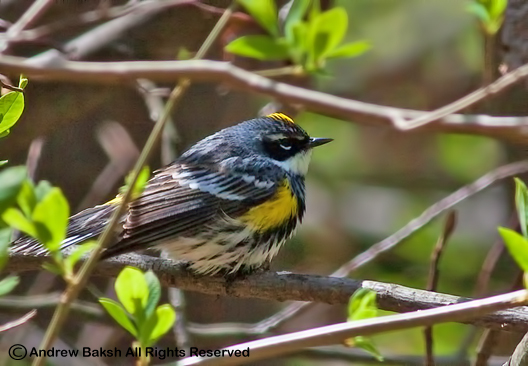
Yellow-rumped warbler in Van Cortlandt Park. Photo: Andrew Baksh
In 2013, NYC Audubon made strong arguments in opposition to asphalt paving of the Putnam Trail:
Ideally, NYC Audubon would like the trail to remain in its current, unimproved state. The Putnam Trail has provided citizens of the New York City metropolitan area with an invaluable opportunity to forge a close connection to the natural world. The proposed trail improvements are likely to dilute the uniquely quiet and contemplative atmosphere of the trail, making it more like the multitudes of walkways found in parks throughout the city. The improved trail is likely to attract more people and support a wider range of activities, thereby creating a busier atmosphere and generating the potential for conflicts between new users and those seeking the experience of the old trail… the Department must not overlook the fact that the work may have some negative ecological consequences… cyclists seeking an ‘off-road’ experience may be discouraged from using the paved Putnam Trail and choose instead to explore other areas of the park not intended for such activities, potentially causing disturbances to important bird areas.
The Audubon Society has designated VCP an Important Bird Area (IBA). Longtime birder John Young compared Central Park and Van Cortlandt Park: “Although the diversity of birds in both parks is similar during migration, the similarity ends with breeding season. The Van Cortlandt marsh alone holds more breeding species than all of Central Park.”
NYC Audubon’s support for the new Parks Department proposal is surprising, to say the least. The differences between the 2013 and the current proposals are not sufficiently consequential to warrant a reversal in NYC Audubon’s 2013 position.
The biodiversity around the Trail will be heavily impacted: NYS DEC has described the wetlands around the Putnam Trail as having “a diversity of wetland communities seldom equaled in Bronx County and containing habitat types found nowhere else in the Bronx.” In addition to the permanent changes in the area created by the Parks Department plan, four acres of land would be disrupted during the more than one-year-long construction process.
Research by scientists at the Virginia Institute of Marine Science found that, “asphalt in wetlands causes a 19 percent decline in reptile and amphibian species and a 14 percent decline in bird species richness.” The National Parks Service documented the toxicity of asphalt for wild lands and species in this 1997 report.
According to the National Wildlife Federation, “Habitat loss — due to destruction, fragmentation or degradation of habitat — is the primary threat to the survival of wildlife in the United States… Every day there are fewer places left that wildlife can call home.” Van Cortlandt Park, which is already fragmented by highways and golf courses, will be further fragmented, hampering the ability of wildlife to thrive in the places it should thrive – Forever Wild Preserves.
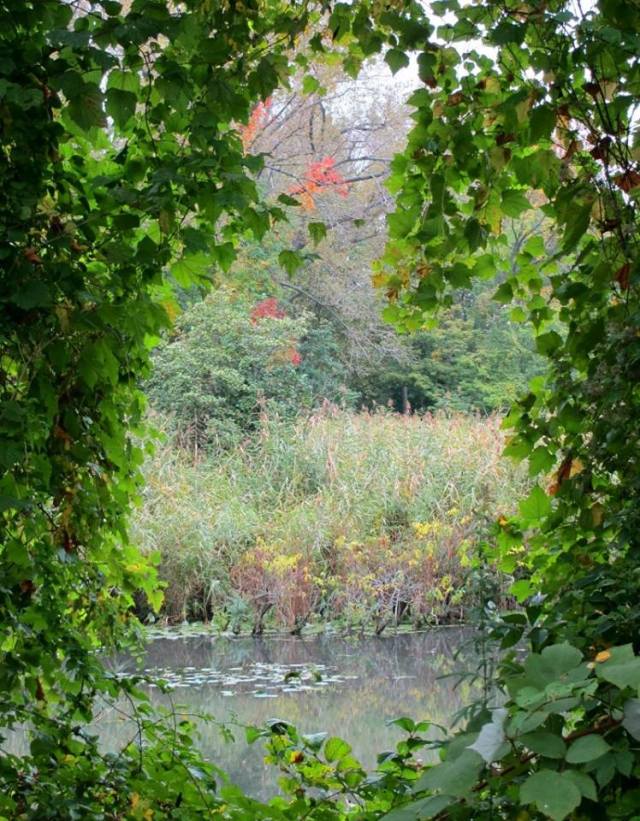
A view, from the southern end of the Putnam Trail, of the Class YO-1 wetland adjacent to the Trail. YO-1 is the highest classification granted by New York State for state and federal protection.
As we stated previously, Van Cortlandt Park’s wetlands are YO-1, the highest classification granted by New York State for state and federal protection. At one time there were 224,000 acres of freshwater wetlands in the city. That number has dwindled to 2,000 acres. Plans for VCP should be designed to improve, not compromise, the wetlands’ ability to provide aquifer recharge and robust habitat and biodiversity in the region.
Alternatives to asphalt that are nature-, bicycle-, and wheelchair-friendly: Both compressed mineral soil and crushed stone are ADA-compliant and suitable for bicycling. These surfaces are more appropriate to the bucolic nature of the trail and they allow universal access for all social groups, who will be able to share equally. More natural surfaces that are more contextually appropriate are easier on the joints for runners, hikers, birders, people with medical conditions that prevent extended walking on asphalt surfaces, and anyone on foot seeking to get out of the concrete jungle and savor a rare and unique natural setting.
The Putnam Trail is an old rail bed, but it is not an “Historical Transportation Corridor:” Long before it was a rail bed, the area around the Putnam Trail was riverine forest and wetland created by the glaciers of the last ice age. Since the last train rumbled through, nature has reclaimed its own.
Asphalt paving of the Putnam Trail is the worst available option and not the only one: The current Parks Department plan would forever rob Bronx and New York City residents of a precious fragment of wilderness and wetland. There are alternatives that preserve the wild nature of the area, protect the wetland, and allow everyone full access to this precious resource – children, bicyclists, those in wheelchairs, folks with disabilities requiring them to walk on soft surfaces, low-income people unable to leave the city in search of experiences in nature.
Let us make the right decision for the Putnam Trail. We believe this effort to make the right decision for the Putnam Trail is truly a significant one, a pioneering struggle for the future. We can use the same practices of the past, or as we move forward into the era dubbed the Anthropocene because of humanity’s unprecedented impact on our earth, we can find new approaches that leave a rich legacy and that aid human resilience. We know where Henry David Thoreau and John Muir would stand – not on the side of maximum human convenience as the sole decision-making criterion for natural places, but on the side of a harmonious human relationship with the natural world.
Sincerely,
Bronx Climate Justice North
